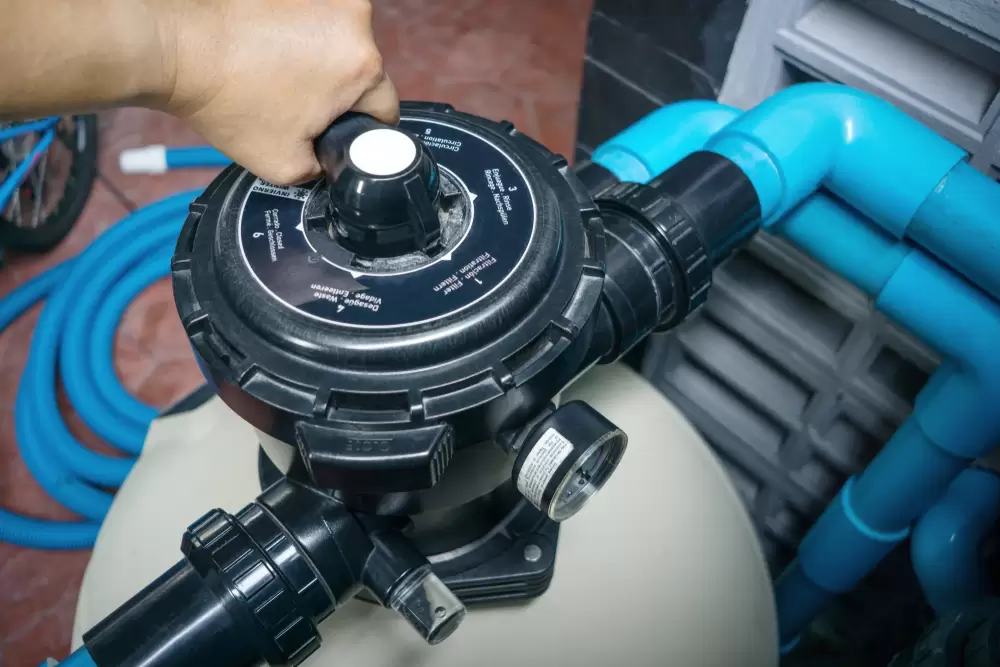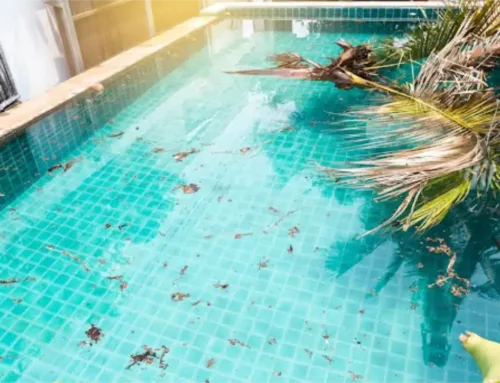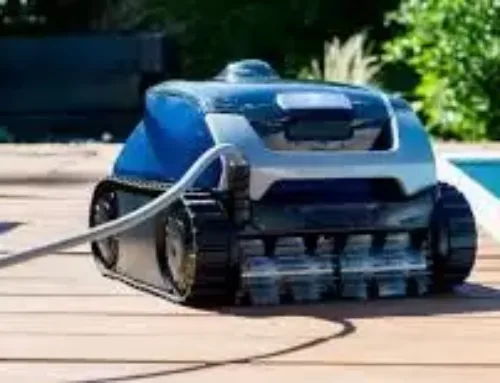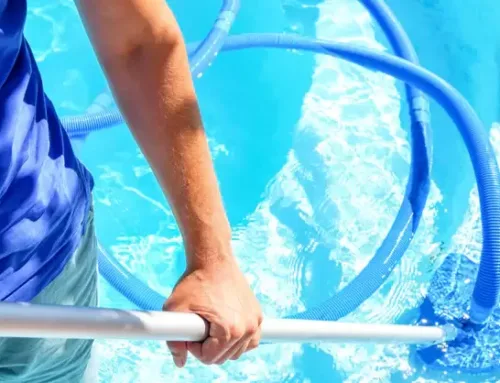Backwashing your pool is one of the simplest yet most important maintenance tasks every pool owner should know. It keeps your filtration system working efficiently, ensures crystal-clear water, and extends the life of your pool equipment.
In this 2025 step-by-step guide, we’ll show you how to backwash a pool the right way including when to do it, what equipment you’ll need, and the mistakes to avoid. Whether you use a sand filter, DE filter, or cartridge system, this guide explains everything in clear, practical steps based on real-world pool service experience in Australia.
💡Quick Summary:
Backwashing reverses the water flow through your pool filter to flush out trapped dirt and debris helping maintain clean, balanced, and safe water for swimming.
🌀 What Is Backwashing and Why It Matters
Backwashing is the process of reversing the water flow through your pool filter to remove the dirt, oils, and debris that have built up inside it over time.
When your filter runs in its normal “filter” mode, it traps fine particles from the water. Over days or weeks, these particles clog the media (sand or DE powder), reducing water flow and increasing pressure in the system. Backwashing pushes water in the opposite direction, loosening and flushing that trapped debris out through the waste line.
Here’s why it matters:
If you skip backwashing, you’ll notice warning signs like:
- Sluggish water movement
- Rising pressure gauge readings
- Cloudy or murky water
- Algae growth even after chemical treatment
🧱 Which Pool Filters Can Be Backwashed?
Not every pool filter is designed for backwashing. Here’s the difference:
| Filter Type | Can Be Backwashed? | Notes |
|---|---|---|
| Sand / Glass Media Filters | ✅ Yes | The most common type in Australia. Backwash regularly to keep media clean. |
| DE (Diatomaceous Earth) Filters | ✅ Yes | Backwash, then re-add DE powder through the skimmer. |
| Cartridge Filters | ❌ No | Must be removed and manually cleaned do not backwash. |
Pro Tip: If you’re unsure which filter you have, check the label on the tank or the owner’s manual. Backwashing a cartridge filter can damage it, so always confirm before you start.
🕒 When Should You Backwash Your Pool?
Knowing when to backwash your pool is just as important as knowing how. Backwashing too often wastes water and filter media, while doing it too rarely causes poor filtration and pressure build-up. The key is to find the right balance based on your filter’s condition and your pool’s usage.
💧 The Golden Rule — Watch Your Pressure Gauge
The most reliable way to know it’s time to backwash is by checking your filter’s pressure gauge.
- Take note of your normal operating pressure right after a thorough filter clean that’s your baseline.
- When the gauge shows a 20–25 % increase from that baseline, it’s time to backwash.
For example, if your clean filter pressure is 10 psi, backwash when it reaches around 12–13 psi.
⚙️ Pro Tip: Record your filter’s baseline pressure right after cleaning. Keeping a simple log helps you spot trends and detect early signs of clogging or media wear.
🌦️ Backwash After Heavy Pool Use or Weather Events
Even if your pressure gauge looks fine, there are times you should manually backwash to keep your water clear and healthy:
- After a pool party or heavy bather load – more oils and debris clog the filter faster.
- After storms or strong winds – leaves, dust, and debris quickly build up.
- After treating algae or cloudy water – removes dead algae and residual particles.
- After adding flocculant or clarifier – these products can clog the media and need flushing out.
🚫 Avoid Over-Backwashing
More isn’t always better. Every time you backwash, you send pool water and treatment chemicals straight down the waste line.
- Over-backwashing can waste hundreds of litres of water each time.
- It can also disturb the filter media bed, reducing its filtering performance.
- Sand and DE filters need some debris layer to trap fine particles efficiently.
💡 Tip: Backwash only when necessary. If you notice pressure fluctuating too often, your filter media may need replacement or cleaning.
📋 At-a-Glance: When to Backwash Your Pool
| Situation | Backwash Needed? | Why |
| Pressure gauge rises 20–25 % above normal | ✅ Yes | Filter is becoming clogged |
| After algae treatment | ✅ Yes | Flush out dead algae and chemicals |
| After heavy rain or storms | ✅ Yes | Remove dirt and organic debris |
| After pool parties or high use | ✅ Yes | Oils and dirt clog media |
| Weekly or scheduled maintenance | ⚠️ Maybe |
Check pressure first; don’t overdo it |
🧰 Tools and Equipment You’ll Need
Before you start backwashing your pool, it’s important to make sure you have the right tools and equipment ready. Having everything set up beforehand makes the process smoother, safer, and prevents accidental leaks or water waste.
Here’s what you’ll need for a proper pool backwash:
1. Backwash Hose
A flexible backwash hose connects to the waste port on your filter’s multiport valve and directs dirty water away from the pool area.
- Choose a hose long enough to reach your designated drainage area.
- Make sure it’s securely attached to avoid leaks or blowouts during high-pressure flow.
💡 Pro Tip: Always lay out the hose in a straight line before starting the pump sharp bends can restrict water flow and cause pressure spikes.
2. Multiport or Push/Pull Valve
The valve is the control centre of your filtration system. It allows you to switch between “Filter,” “Backwash,” “Rinse,” and “Waste” modes.
- Multiport valves are the most common in Australia — they have a rotating handle for easy switching.
- Push/pull valves (or slide valves) are simpler, with a vertical handle.
⚠️ Important: Always turn off the pump before changing valve positions. Switching while the pump is running can damage the internal seals.
3. Pressure Gauge
Your filter’s pressure gauge is your best indicator for when to backwash and how well your filter is functioning.
- Check that the gauge is working accurately — replace it if it’s fogged or unresponsive.
Record your baseline pressure after cleaning the filter for future reference (usually between 10–15 psi for most systems).
4. Hose Clamps and Seals
Properly fitted hose clamps and rubber seals prevent leaks at connection points between the hose, valve, and waste outlet.
- Tighten clamps securely, but don’t overtighten — over-compression can crack fittings.
- Check O-rings around the valve lid and waste port regularly to prevent air leaks.
5. Personal Protective Equipment (PPE)
Safety first! Always wear basic personal protective gear when working around pool equipment.
- Gloves: protect hands from sharp edges and chemical residue.
- Safety goggles: prevent splashes when handling DE powder or debris-laden water.
- Non-slip shoes: provide grip on wet pool decks.
6. Optional: DE Powder (for DE Filters)
If you have a Diatomaceous Earth (DE) filter, you’ll need to recharge it with DE powder after every backwash.
- Add the correct amount (as per manufacturer instructions) through the skimmer once the filter is back in “Filter” mode.
- Use a DE scoop or cup to measure — don’t estimate by eye.
Expert Tip: Always store DE powder in a sealed container and handle it carefully to avoid inhalation.
⚙️ How to Backwash a Pool Filter (Step-by-Step Instructions)
Backwashing your pool filter is a simple process once you know the correct order of steps.
Follow these seven easy steps to safely and effectively clean your sand or DE filter — and restore strong, healthy water flow to your pool.
Step 1 — Turn Off the Pump
Always start by turning off the pool pump before changing any valve settings.
This prevents damage to your pump and internal valve seals. Once the pump is completely off, double-check that no water is still circulating.
⚠️ Important: Changing the valve position while the pump is running can cause internal gasket damage or lead to leaks.
Step 2 — Attach the Backwash Hose to the Waste Port
Connect your backwash hose securely to the waste port of your filter’s multiport valve.
Make sure the hose is straightened out and free of kinks to allow smooth water flow.
Direct the other end of the hose to an approved drainage or disposal area — never into a stormwater drain.
💡 Pro Tip: Use hose clamps to ensure a tight connection and prevent blowouts under pressure.
Step 3 — Set the Valve to “Backwash”
Rotate the multiport valve handle (or push/pull valve) to the BACKWASH position.
This reverses the water flow, pushing water up through the filter media to flush out trapped debris and contaminants.
- Double-check that the valve handle clicks securely into position.
- Ensure the backwash hose is directed safely to waste.
Step 4 — Turn On the Pump and Run Until Clear (2–3 Minutes)
Turn the pump back on and watch the sight glass (small clear window on the valve) or observe the water exiting the waste hose.
- At first, the water will appear dirty or cloudy.
- Continue running the pump for 2–3 minutes, or until the water runs clear.
🧼 This step flushes out the majority of dirt, oils, and fine debris from the filter media, restoring proper flow and performance.
Step 5 — Turn Off the Pump and Set to “Rinse” (30–60 Seconds)
Once the backwash water runs clear, turn the pump off again.
Set the valve handle to the RINSE position and restart the pump for 30–60 seconds.
This step settles the filter media back into place and prevents residual dirt from flowing back into the pool.
After rinsing, turn off the pump once more before moving to the next step.
💧 Note: Skipping the rinse step can cause a burst of dirty water to enter the pool when you resume normal filtering.
Step 6 — Return Valve to “Filter” and Restart the System
Turn the handle to the FILTER position the normal operating mode.
Now, restart the pump to resume regular circulation.
Check the pressure gauge; it should drop back near your recorded baseline level.
📊 If the pressure hasn’t dropped significantly, your filter media may need cleaning or replacement.
Step 7 — Top Up Pool Water and Check Pressure
Backwashing can drain a considerable amount of pool water, so always check your water level after finishing.
If it has dropped below the skimmer opening, top it up using a garden hose before running the system long-term.
Finally, take note of your new filter pressure reading and log it as your clean baseline.
🧩 Special Step for DE Filters Only
If you have a Diatomaceous Earth (DE) filter, you’ll need to re-add DE powder through the skimmer after completing the backwash cycle.
This restores the thin coating of DE on the filter grids, which is essential for proper filtration.
⚠️ Always follow manufacturer dosage guidelines — adding too little DE reduces filtration efficiency, while too much can clog the filter.
🧱 Filter Type Comparison – Sand, DE, and Cartridge Filters
Not all pool filters work the same way, and understanding the differences helps you know when and how to backwash correctly.
Below is a quick comparison of the three most common pool filter types used in Australia — Sand, Diatomaceous Earth (DE), and Cartridge filters.
| Filter Type | Backwash Needed | Notes / Tips |
| Sand / Glass Media | ✅ Yes | Backwash weekly or when pressure rises 20–25% above baseline. Rinse for 30–60 seconds after backwashing to reset the media. Replace sand every 3–5 years for best performance. |
| DE (Diatomaceous Earth) | ✅ Yes | Backwash when pressure increases, then re-dose with DE powder via skimmer (per manufacturer’s instructions). Deep clean DE grids once or twice a year to prevent clogging. |
| Cartridge | ❌ No | Do not backwash. Remove the cartridge and hose it down manually. Soak in filter cleaner every few months for a full clean. Replace cartridges every 1–2 years depending on use. |
Quick Takeaway
- Sand and DE filters can be backwashed, but DE filters require recharging afterward.
- Cartridge filters cannot be backwashed — forcing water backward can damage them.
- Sand filters are easiest to maintain, while DE filters offer the finest filtration.
💡 Expert Tip: If you’re unsure which type your pool uses, look at the label on the filter tank — it usually specifies the filter medium and maintenance method. You can also check the manufacturer’s model online.
🧯 Common Backwashing Mistakes (and How to Avoid Them)
Even experienced pool owners can make small backwashing errors that lead to wasted water, damaged filters, or cloudy water.
Here are the most common backwashing mistakes — and how to prevent them — based on years of professional pool service experience.
1. Over-Backwashing (Wasting Water and Filter Media)
Backwashing too often or for too long can do more harm than good.
- Each cycle can waste hundreds of litres of treated water.
- Excessive backwashing can disrupt the filter media bed, reducing its ability to trap fine debris.
- Sand filters, in particular, need a thin layer of dirt to improve filtration efficiency.
💡 Pro Tip: Only backwash when your pressure gauge shows a 20–25 % increase from normal, or when the water flow clearly slows down.
2. Skipping the Rinse Cycle
The rinse step is often overlooked — but it’s essential.
- Rinsing settles the filter media after backwashing.
- It prevents dirty water from returning to the pool when you switch back to “Filter” mode.
- Skipping this step is one of the top reasons for cloudy water after backwashing.
⚙️ Always rinse for 30–60 seconds before returning to normal filtering.
3. Not Topping Up Pool Water
Backwashing flushes a significant amount of water out of your system.
- Low water levels can cause air to enter the skimmer line, reducing pump efficiency or even causing pump cavitation.
- Running the pump with low water can also damage seals and impellers.
✅ Always check the pool’s water level afterward and top it up to at least halfway up the skimmer opening.
4. Forgetting to Turn Off the Pump Before Changing Valve Settings
This is one of the most damaging mistakes you can make.
- Switching the multiport or push/pull valve while the pump is running can cause internal gasket damage or valve leaks.
- It can also create sudden pressure surges that crack fittings or hoses.
⚠️ Golden Rule: Pump off first, then change valve settings — every single time.
5. Not Monitoring Filter Pressure Before and After Backwashing
Your pressure gauge is the most important diagnostic tool on your filter.
- Ignoring it means you’ll never know when backwashing is really needed.
- If the pressure doesn’t drop after a proper backwash, your media may be compacted, worn out, or there could be a blockage.
What to do:
- Record your baseline (clean) pressure right after a full filter clean.
- Compare before-and-after readings each time you backwash.
- Replace sand or DE media every few years for consistent performance.
Quick Recap: Backwashing Mistakes to Avoid
|
⚠️ Mistake |
🚫 Consequence |
✅ Solution |
|
Over-backwashing |
Wastes water & media |
Only backwash when pressure rises 20–25 % |
|
Skipping rinse cycle |
Cloudy water returns to pool |
Rinse 30–60 sec after backwashing |
|
Not topping up water |
Pump damage, air in lines |
Always refill after backwash |
|
Changing valve while pump on |
Valve/gasket damage |
Turn pump off before switching modes |
Expert Insight:
If your pressure doesn’t drop after backwashing, it could indicate deeper issues — such as clumped sand, calcified media, or a broken lateral inside the filter. In that case, schedule a professional pool filter inspection to prevent long-term damage.
🔧 Troubleshooting Guide
Sometimes, even after doing everything right, your pool filter may not perform as expected.
If your pool filter isn’t clearing properly or your water still looks dirty after backwashing, use this quick guide to diagnose the problem — and learn when it’s time to call in a professional.
💦 1. Water Doesn’t Run Clear During Backwash
If the water in your sight glass or discharge hose stays dirty longer than usual, you may be dealing with:
- Clumped filter media from oils, sunscreen, or chemical residue
- Channeling inside the sand bed (water taking shortcuts instead of flowing evenly)
- Infrequent deep cleaning, leading to hardened debris layers
Fix it:
- Perform a deep clean of the filter media using a pool filter cleaner solution.
- For persistent issues, consider a sand or glass media replacement every 3–5 years.
📉 2. Pressure Doesn’t Drop After Backwashing
If your pressure gauge stays high even after a full backwash cycle, the problem could be:
- Worn or compacted media that no longer flushes properly
- Faulty or clogged valve internals restricting flow
- Partially blocked return lines or undersized plumbing
Fix it:
- Inspect your multiport or slide valve for internal gasket damage.
- Replace old filter media if it’s more than a few years old.
- Have a technician check the plumbing for obstructions or scale buildup.
⚪ 3. DE Returning to the Pool
If you see white powder blowing back into the pool after backwashing a DE filter, you may have:
- A torn DE grid or fabric inside the filter
- A damaged manifold or standpipe O-ring
- Incorrect DE powder dosing (too much or too little)
Fix it:
- Open the DE filter and inspect each grid for tears or cracks.
- Replace worn or damaged gaskets and O-rings.
- Re-dose with the correct DE amount through the skimmer after reassembly.
💡 Expert Tip: Always use manufacturer-recommended DE powder measurements. Overdosing can clog grids and reduce flow.
🔧 4. Valve Stuck or Hard to Move
A valve that’s difficult to turn is a sign of poor lubrication or internal wear.
- Sand or grit can build up under the cover plate.
- Dried or cracked O-rings can cause stiffness.
Fix it:
- Remove the valve cover (pump off) and clean out any sand or debris.
- Apply pool-grade silicone lubricant to the O-rings.
- Replace worn seals or spring assemblies if the handle still sticks.
🌫️ 5. Cloudy Water After Backwashing
If your pool water becomes cloudy right after backwashing, the rinse cycle was likely skipped or too short.
- Dirty water from the backwash line may have flowed back into the pool.
- Fine particles weren’t properly settled in the filter media.
Fix it:
- Run the Rinse cycle for 30–60 seconds before returning to “Filter” mode.
- Allow the system to run for several hours to clear the water.
- Check chemical balance — sometimes high pH or low chlorine can worsen cloudiness.
⚠️ If the problem persists, your sand media may be channeling or breaking down — a full media change may be needed.
Pro Insight: When to Call a Professional
If you’ve tried these fixes and your pool still isn’t clearing, it’s likely time for professional help.
Persistent high pressure, cloudy water, or recurring DE blowback can signal deeper mechanical or media issues.
👉 Contact your local experts at 1 PoolCare Perth for:
📞 Call us or book online to restore full filter performance and keep your water sparkling clear all season.
🌿 Safe Disposal of Backwash Water (Australia-Specific)
Properly disposing of pool backwash water is not only good practice — it’s a legal requirement in Australia. The water flushed out during backwashing contains chlorine, salt, and other pool chemicals that can harm the environment if released incorrectly.
That’s why following Western Australia’s Water Corporation guidelines is essential for every homeowner and pool technician.
🚫 Never Discharge to Stormwater Drains
Backwash water must never be drained into the street, garden, or stormwater system.
Storm drains flow directly into rivers and oceans without treatment — meaning chlorine, algaecides, and other chemicals can pollute local waterways and harm aquatic life.
⚠️ Illegal Discharge Warning: Fines may apply under local council and WA Water Corporation environmental regulations if pool water enters storm drains.
🚽 Direct to Sewer or Soak Well (Per WA Regulations)
According to Water Corporation Western Australia, pool owners should always direct backwash water to the sewer connection or a dedicated soak well designed to absorb and treat waste water.
- Check your property’s sewer connection point before attaching a backwash hose.
- If a direct sewer line isn’t available, a licensed plumber can install an approved discharge point.
- For rural properties, use a gravel soak pit or similar system that meets local council standards.
🧴 Use a Dechlorinator or Neutralise Before Discharge
Before releasing any pool water into a soak well or lawn area:
- Use a chlorine neutraliser or dechlorination product to make the water safe.
- Allow freshly chlorinated water to sit for 24–48 hours before discharge.
- Test with a chlorine strip — it should read 0 mg/L free chlorine before release.
💡 Pro Tip: Natural sunlight helps dissipate chlorine faster — leave the water exposed before draining if possible.
⚖️ Check Your Local Council Rules
Each local government area across Perth and Western Australia may have slightly different regulations.
Before backwashing, always check your local council’s website for specific rules on:
- Sewer connection locations
- Soak pit requirements
- Discharge limits and environmental controls
🧑🔧 Need Help with Compliant Pool Backwashing?
Improper backwashing can lead to fines or equipment damage — but it’s easy to avoid with the right help.
Our certified pool technicians in Perth handle every aspect of backwashing, from setup and disposal to full filter servicing, all in compliance with WA Water Corporation regulations.
📞 Need help? Book a professional pool service today — we’ll ensure your backwashing system is safe, efficient, and 100% compliant.
❓ Frequently Asked Questions (FAQ)
These are some of the most common questions pool owners ask about backwashing with quick, expert-approved answers that make maintenance simple and stress-free.
You should backwash your pool filter every 1–2 weeks, or whenever the pressure gauge rises by 20–25 % above your normal operating level. Backwashing too often wastes water, while skipping it can reduce filtration efficiency and cause cloudy or green water.
No — cartridge filters cannot be backwashed. They must be removed and cleaned manually with a hose or filter cleaner. Forcing water backward through a cartridge can damage the pleats and reduce filtration performance.
💡 Tip: Clean your cartridge filter every 4–6 weeks, depending on pool usage and debris levels.
A typical backwash cycle lasts about 2–3 minutes, or until the water in the sight glass runs clear. If it takes much longer, your filter media may be clumped or compacted — in which case, a deep clean or replacement may be needed.
If you skip backwashing, debris and oils clog the filter media, reducing water flow and circulation. Over time, this can cause cloudy water, algae blooms, and even pump damage due to pressure build-up. Regular backwashing keeps your system healthy and your pool sparkling clear.
You can stop backwashing once the water in the sight glass or waste hose runs clear and your filter pressure gauge drops back near its baseline. Always follow up with a short rinse cycle (30–60 seconds) to settle the filter media before resuming normal operation.
📢 Bonus Tip:
For pools in Perth’s hotter months, check pressure more often — high evaporation and heavy swimming can increase debris load faster than usual.
📢 Bonus Tip:
For pools in Perth’s hotter months, check pressure more often — high evaporation and heavy swimming can increase debris load faster than usual.
Need Help Backwashing or Maintaining Your Pool?
Keeping your pool clean and healthy doesn’t have to be stressful. Whether you need help backwashing your filter, troubleshooting water clarity issues, or performing full system maintenance, our certified pool technicians in Perth are here to help.
At 1 PoolCare, we provide professional pool maintenance across Western Australia, specialising in:
With years of hands-on experience, our team ensures your pool filtration system runs efficiently — saving you time, water, and costly repairs down the line.
Local Expertise You Can Trust:
Servicing homes across Perth, Fremantle, Rockingham, Joondalup, and surrounding WA suburbs.
📞 Ready to Enjoy Crystal-Clear Water Year-Round?
Why Choose 1 PoolCare?
|
💧 Trusted Locals |
🧠 Qualified Technicians |
♻️ Eco-Compliant Practices |
|
Proudly Perth-based |
Certified pool specialists |
Environmentally responsible |
Final Note:
Regular, professional servicing not only protects your pool equipment but also helps maintain water safety and clarity — all while keeping your system compliant with local WA regulations.

With over 20 years of industry experience, Adrian Mole is the founder of 1 Pool Care, a leading mobile pool service in Perth. Known for his expert knowledge and reliable service, Adrian delivers professional pool cleaning, equipment repairs, and water balancing across the metro area. Backed by SPASA accreditation, he’s committed to quality, convenience, and customer satisfaction.











Social Media